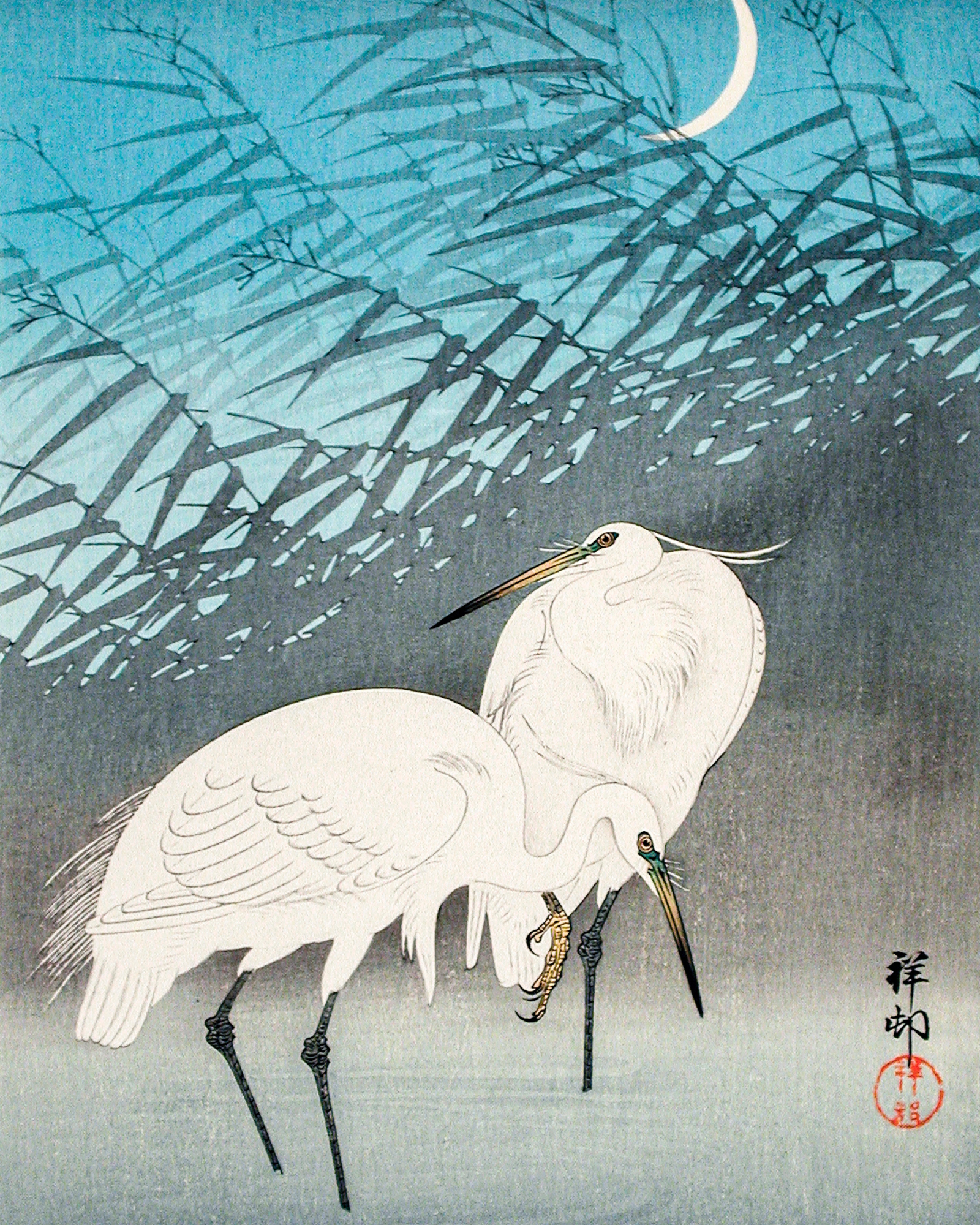Utagawa Hiroshige: The Poet of Japanese Landscapes

Utagawa Hiroshige (1797–1858) remains one of the most celebrated artists of Japan’s Edo period, known for his mastery of ukiyo-e (woodblock printing). His works, which capture the beauty of landscapes, seasons, and daily life, have earned him global recognition as a master of composition and atmosphere. Hiroshige’s art is a harmonious blend of nature’s majesty and the subtle emotions of the human experience, making him one of Japan’s most beloved cultural icons.
The Life and Artistic Journey of Utagawa Hiroshige
Born as Andō Tokutarō in Edo (modern-day Tokyo), Hiroshige grew up in a family of fire wardens. Despite his humble beginnings, he showed early promise as an artist and, at the age of 15, apprenticed under Utagawa Toyohiro, a prominent ukiyo-e master. It was here that he adopted the name Utagawa Hiroshige and began his artistic journey.
While Hiroshige initially focused on traditional ukiyo-e themes, such as kabuki actors and beautiful women, he found his true calling in landscape art. Inspired by the natural beauty of Japan, he developed a unique style that emphasized perspective, color, and mood, setting him apart from his contemporaries.
The Style and Techniques of Hiroshige
Hiroshige’s ukiyo-e prints are celebrated for their innovative composition, vibrant colors, and evocative storytelling.
Perspective and Depth: Unlike many ukiyo-e artists of his time, Hiroshige often employed Western-style perspective, creating a sense of depth and distance. This technique can be seen in works like The Fifty-Three Stations of the Tōkaidō, where winding roads and distant mountains draw the viewer into the scene.
Color and Atmosphere: Hiroshige was a master of color gradation, using techniques like bokashi to create smooth transitions between tones. His use of vibrant blues, soft greens, and muted earth tones brought his landscapes to life, capturing the essence of Japan’s changing seasons.
Nature and Human Connection: Hiroshige’s art often depicted people in harmony with their surroundings. Travelers crossing bridges, farmers tending fields, and fishermen at work all reflect the simple beauty of daily life intertwined with nature.
Iconic Works
The Fifty-Three Stations of the Tōkaidō (1833–1834): This series, inspired by Hiroshige’s journey along the Tōkaidō Road, is perhaps his most famous work. Each print depicts a stop along the route, showcasing stunning landscapes, lively villages, and the travelers’ experiences.
One Hundred Famous Views of Edo (1856–1858): This series captures the beauty of Edo (modern Tokyo) through seasonal landscapes, urban scenes, and landmarks. The innovative compositions and use of color make it one of the greatest achievements in ukiyo-e.
Sudden Shower over Shin-Ōhashi Bridge and Atake: Part of the One Hundred Famous Views of Edo, this iconic piece depicts a dramatic rainstorm over a bridge, with people rushing for cover. The dynamic composition and attention to detail highlight Hiroshige’s genius.
Themes in Hiroshige’s Art
Nature’s Majesty: Hiroshige’s art celebrates Japan’s natural beauty, from snow-capped mountains to tranquil rivers. His ability to capture the mood of a scene, whether serene or dynamic, evokes a deep connection to nature.
The Changing Seasons: Seasonal transitions play a central role in Hiroshige’s work. Cherry blossoms in spring, summer rains, autumn leaves, and winter snows are depicted with a poetic sensibility, reflecting the Japanese appreciation for nature’s cycles.
Travel and Exploration: Many of Hiroshige’s prints focus on the theme of travel, capturing the landscapes and experiences along Japan’s famous roads. His works evoke a sense of adventure and curiosity, inviting viewers to journey through his eyes.
Global Recognition and Influence
Hiroshige’s art reached international audiences in the late 19th century, influencing the Impressionist and Post-Impressionist movements in Europe. Artists like Vincent van Gogh, Claude Monet, and Edgar Degas admired his compositions and use of color, incorporating similar techniques into their own works.
Today, Hiroshige’s prints are housed in prestigious collections worldwide, including the British Museum, the Museum of Fine Arts in Boston, and the Tokyo National Museum.
Legacy and Impact
Utagawa Hiroshige’s innovative approach to ukiyo-e transformed the genre, elevating landscape art to new heights. His works continue to inspire artists and art enthusiasts, offering a timeless glimpse into Japan’s natural beauty and cultural heritage.
Beyond his artistic achievements, Hiroshige’s prints serve as historical documents, preserving the landscapes, architecture, and daily life of Edo-period Japan. His ability to capture the fleeting beauty of life and nature ensures his place as one of the greatest artists in Japanese history.
Utagawa Hiroshige’s art is a celebration of Japan’s landscapes, seasons, and people. Through his mastery of ukiyo-e and his innovative techniques, he created works that transcend time, inspiring generations of artists and viewers alike.
Hiroshige’s legacy is a reminder of the power of art to connect us to the world around us and to the beauty of fleeting moments. His prints continue to captivate audiences, offering a window into the heart and soul of Japan.